In collaboration with Rossborough Private Clients


In collaboration with Rossborough Private Clients


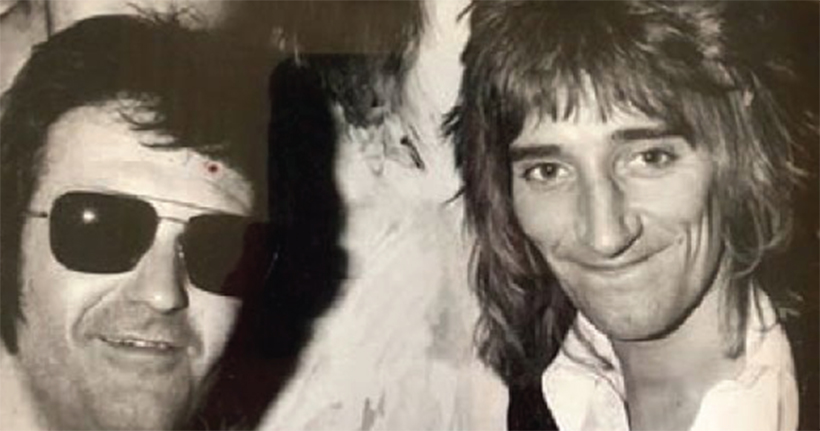
David Oxtoby prints
If my godfather left me £5,000, I wouldn’t hesitate to spend every penny buying the suite of etchings (24), which Dave Oxtoby produced in 1974.
David Jowett Greaves Oxtoby is undoubtedly one of Britain’s greatest printmakers, as the show at the British Museum proved a few summers ago. He was one of the notorious ‘Bradford Mafia’, a group of young Yorkshire artists, who after attending the Regional College of Art in Bradford, came to London to further their education at the Royal College of Art and The Royal Academy schools. As well as Oxtoby, the group included David Hockney, Norman Stevens A.R.A, John Loker and Mick Vaughn. Before he had left the Royal Academy schools, Oxtoby had his first one man show in New York. His was and is a prodigious talent.
By the early 1970s his hands were starting to crack, and he was told that he was allergic to the acrylic paints he was using. After taking medical advice, he took up etching and what a triumph that was. In collaboration with J.C. Editons he produced a suite of 24 immensely complicated, in some cases, 4 colour, etchings. I have the good fortune to own a set of artist’s proofs.

 In 1974 I worked for Alex Postan Fine Art and was entrusted with getting publicity for the show of etchings, which included watercolours and acrylics as well as prints. It was the easiest job I have ever had. Marina Vaizey wrote a half page review of it in The Telegraph, Bill Packer, a half page in the Financial Times and it was in the list of the 10 best things to do this Christmas in London in the Daily Express. Rod Stewart came to the private view. Oxtoby went on to exhibit with the Redfern Gallery in Cork Street in the 70s where the private views would sell out. Elton John bought Oxtoby’s canvases in vast numbers, for prices that were somewhere between Hockney and Picasso. He is still with the Redfern.
In 1974 I worked for Alex Postan Fine Art and was entrusted with getting publicity for the show of etchings, which included watercolours and acrylics as well as prints. It was the easiest job I have ever had. Marina Vaizey wrote a half page review of it in The Telegraph, Bill Packer, a half page in the Financial Times and it was in the list of the 10 best things to do this Christmas in London in the Daily Express. Rod Stewart came to the private view. Oxtoby went on to exhibit with the Redfern Gallery in Cork Street in the 70s where the private views would sell out. Elton John bought Oxtoby’s canvases in vast numbers, for prices that were somewhere between Hockney and Picasso. He is still with the Redfern.
He has had more than 50 solo exhibitions and taken part in more than 70 group shows, yet for much of the last 30 years has lived like a recluse and kept all his latest work from public scrutiny. The result of this has had an adverse effect on the value of his work.
Oxtoby has not had the recognition for the brilliance of his draftsmanship and use of colour from the establishment that his oeuvre deserves. This seems to be because his work is inspired by popular culture, pop, rock and blues music, which is considered low brow and because he works from photographs, despite knowing subjects like Jimi Hendrix, George Harrison and Roger Daltrey well.
He was 83 in January and is not in good health. The cracked hands, which turned him into a printmaker, were actually caused by misdiagnosed diabetes. What future generations will make of his work remains to be seen, but I believe he is ready for a critical re-assessment and should take his rightful place amongst the greats of late 20th/early 21st century British art.
Private Vault Experience, described as ‘the billionaires new piggy bank’.

I would spend my £5,000 on a limited Edition by the Japanese Contemporary artist Yayoi Kusama (born 1929).
I would choose one of her objects series, perhaps a Tea Set (below), or a group of mini pumpkins (opposite). They are all colourful, tactile, fun, attractive, look great on display and invite curiosity. Plus, they offer an investment opportunity, as Kusama’s work has an international appeal and great originality. Not only is her work recognisable, but it also proves to be a strong international brand.
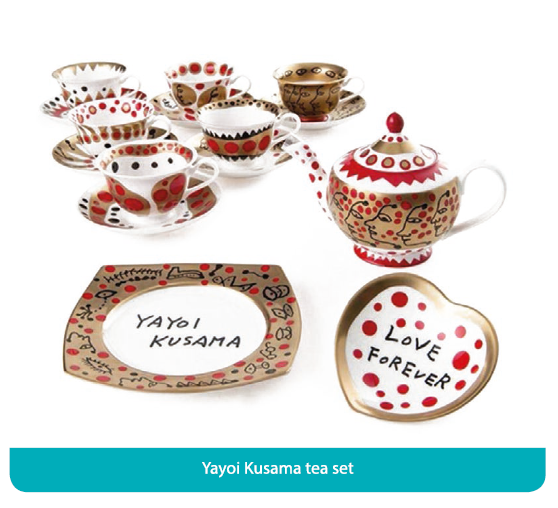
Her work comes up for sale all the time, is widely available and sells well around the world. This is of key importance with art investment; the more countries you can sell in the better your chances are of some financial uplift on your purchase price.
I have chosen a few examples which I would buy in a heartbeat.

Autumn is upon us, and so we all prepare to bring our winter coats and hats down from the attic ready to face the colder days and chill in the air. But it’s not all doom and gloom. Who says new season, says new coats, and perhaps new jewels…
If I had £5,000 I would buy myself a beautiful Art Déco diamond double clip brooch. And that would certainly brighten up any cold day and any winter coat or hat! Why would I pick that particular piece? The answer is simple and straight forward: one can never go wrong with diamonds. Diamonds are timeless, full of fire, brilliance and sparkle. Diamonds set in Art Déco pieces are often a mix between old brilliant-cut (round) and very sharp calibré-cut. Calibré-cut is the name for those stones which have been cut to fit a precise piece of jewellery. They come in all sorts of shapes and sizes and can be diamonds, rubies, sapphires, emeralds, onyx… the list goes on. It is that unique combination of cuts which I find fascinating and exciting when wearing a piece of jewellery. Choosing an older piece of jewellery means embracing its history. With Art Déco, the history is in the stones, but not only. The material used to mount the stones changed from gold to platinum. Platinum became a new favourite in the roaring 20s and was used by all the great designers. So much so that Cartier launched their new platinum jewellery collection on the same day they opened their studio in Paris, rue de la Paix, because of what it represented in the world of jewellery. This new technique offered more sturdiness to the pieces and brighter metal.

But Art Déco is so much more than stones and metal. It is a symbol, synonymous of freedom and order after a world in chaos. The straight lines found in Art Déco jewellery break with the traditional ribbons and swags from the Belle époque. They can appear simple but are in fact very complex, combining circular shapes with kite or baguette-cuts for example. They are designed with an edge to give women an edge. The pieces can be angular but more importantly they have clean lines, with perfect symmetry, no room for “delicacy” found in earlier jewels. Even though on close inspection, Art Déco pieces are incredibly delicate as they try to juggle new shapes, cuts and combinations of colours. With an all diamond-set piece, one is able to add it to any coloured outfit.
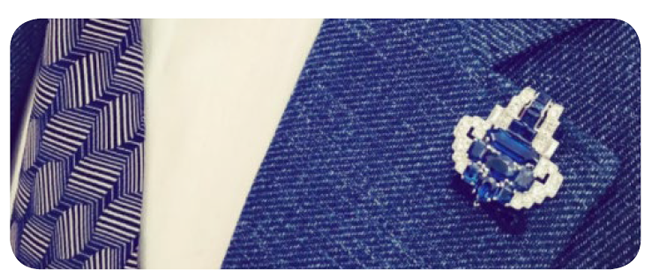
A double-clip brooch from that period would combine all of the above and even more. I would pick this item for its ambivalence. It can be worn as one piece, or separately, allowing to wear one part on a silk scarf, to tie the two ends together for example, and the other perhaps on one’s coat, hat or a suit.
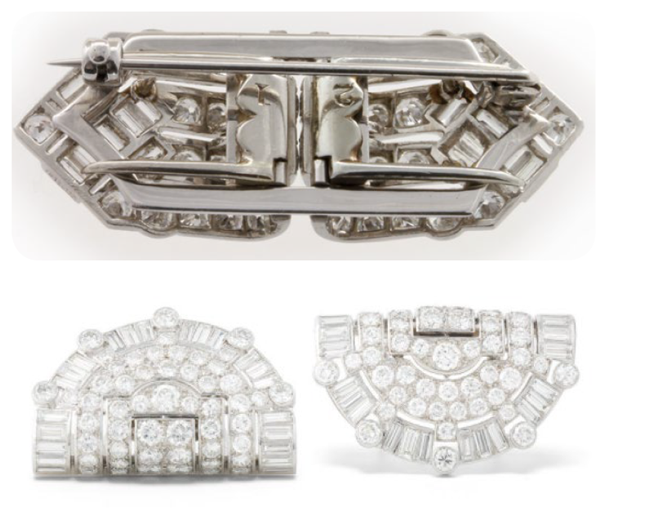
Chic and timeless, an Art Déco piece worn in a man’s world makes a strong statement of equality and fearlessness, fitting any suit or garment with its contemporary look filled with history.
£5,000 – it seems like a lot of money to be spending on a watch doesn’t it? A piece of mechanical jewellery that serves pretty much no other purpose than to look good, and make the owner proud to be wearing it… however, in the world of horological collections £5,000 is almost a starting point for many top tier watches.

The watches that I have included today represent the most popular category in the market – the gentleman’s stainless steel sports watch. If you have read my articles on the Rolex Submariner, you will be aware that even trying to look at one of these brand new is somewhat akin to trying to buy toilet roll in 2020, and unless you have the contacts, don’t even think about owning one until you have been on the waiting list for years…
We will however start with a couple of notable mentions – firstly the Ulysse Nardin Diver 8163. It’s a brilliant, strong move from a company that has always had a little bit of an identity crisis – from supplying the majority of the worlds naval forces to releasing slightly risqué watches with different images from the Kama Sutra, Ulysse Nardin have always been a choice for those who wanted something a bit different and this 42mm diver is about as accessible as they will ever get, it’s a great looking watch with a bold dial and bezel, and at £5,600 (I know I am cheating a little) I think it’s a great alternative to a modern Submariner.

Second, is the Grand Seiko Sport Automatic Spring Drive GMT which also comes in at around £5,500. This is a slightly bizarre choice as Grand Seiko occupy the position as the ‘Lexus’ of the watch world – everyone knows they probably make the best product, will work brilliantly well forever and when they need servicing, it will be at a moderate cost. So why aren’t they flying off the shelves? Because of that badge unfortunately. It’s a great shame, but wearing a £5,000 watch, with the same heritage as the digital timepiece I wore to school just doesn’t create the same desire as some of the more luxury brands we all know and love.
So – what would I buy with £5,000?
There is only one option, not only do I think that this is the best watch for the money, I also think that to a certain degree, you would be hard pushed to find a better time piece in many greater price brackets.
The Omega Seamaster – it is frankly, brilliant.
Coming in at £4,450 it’s also about a grand cheaper than my other alternatives, but never looks like a cheap watch. Omega are without doubt one of the power houses of Swiss watch design, Rolex are simply young upstarts when it comes to heritage (in fact Hans Wilsdorf launched Rolex as a cheaper alternative to Omega) and Omega can claim many of the worlds most notable horological moments including the first watch on the moon. Currently though, most people will associate the brand with James Bond, and that’s ok – what better ambassador than a secret agent whom can jump
out of planes, trains and blow stuff up – all with the aid of his timepiece.
The Seamaster, in my opinion is all the watch you would ever need in this category, it’s a proper divers watch with a stunning dial, a comfortable bracelet, 300m water resistance, and a great brand heritage. There are a multitude of colours to buy them in and you can literally walk into a shop and buy one, without having to sell your soul or pay a massive premium to own one.
A great watch, at a great price point.


Finally, this month will see the release of the much anticipated ‘No Time to Die’ – the 25th film in the James Bond series, despite a very long wait since the original release date the world is waiting to see just what Bond can offer in Daniel Craig’s last outing as 007.
It is a phenomenon that in 2021, a character such as Bond can still pull the crowds, but it’s the franchise that always wins and whatever is associated with Bond generally brings in the royalties as well. With a supposed birthday of the 11th of November 1920, he is certainly looking good for his age…
How though, has Bond changed over the years? In 1962 when ‘Dr. No’ was released, it’s doubtful that anyone could have seen just what effect the Scottish/Swiss secret agent (who was named after an expert on American birds, and one of Ian Fleming’s favourite authors) would have on films, products and computer games to name but a few.
Now, what a lot of people don’t realise is that Bond’s car was a Bentley – according to Ian Fleming – the Aston Martin came with the films, but the DB5 is now possibly the most recognisable movie car on the planet, possibly more recognisable than some of the lesser-known Bond actors (sorry, Timothy). Strangely, the most expensive example of this legend is a Bond car, but not as one might imagine. The promotional car for ‘Goldfinger’ (1964) sold a couple of years ago for close to £5,000,000 and was in remarkable condition as Mr Connery had never driven it in anger during production. To put it in context a standard DB5, minus ejector seat and oil slick jets, can be purchased for under a million.

For those with a lesser budget, my choice would always be the Alfa Romeo GTV6 driven by Roger Moore in Octopussy – obviously this was a prop car as when I owned one of these, saving the world from nuclear destruction would not have been on my agenda – just getting it to start was considered a success.

Bond’s watches are another example of how one man (and maybe a great marketing department) can change the course of a product. So, what was the first ever Bond watch on screen? It was the instantly forgettable Gruen Precision 510 (Connery’s personal watch, and worn in many other Bond outings)… but nobody cares about that and so we always talk about the Rolex Submariner 6538.

Again, the source of the watch was reputably Connery, although it has been hinted that it may have belong to production staff… with the passing of Connery, I suppose we will never get the full lowdown… what is true however is the escalating value of the 6538 along with most other vintage Rolex sports models. If you want to` be a part of the ‘Big Crown’ Rolex club, be ready to hand over close to £100,000 for a good one these days.
There are of course, again many other options for classic Bond watches, with Seiko, Breitling and most recently Omega, whom have pretty much rejuvenated a brand tanks to Pierce Brosnan, and Daniel Craig wearing some timepieces that do far, far more than tell the time.
When we look at the clothes that Bond sports, there has always been that sartorial elegance with Bond, with Daniel Craig wearing a symphony of Tom Ford attire, with accoutrements by Sunspel, Orlebar Brown and many others but, for me nothing beats Roger Moore in the Safari Suit though, capturing a moment when being a secret agent required a pair of flared trousers, and preferably with a silk cravat.
So, over the years – many things have changed with Bond from watches, to cars, and clothing manufacturers. Hopefully, ‘No Time to Die’ will be as good as we have come to expect from 007, as nobody does it better…

Though not the inventor Edward Lear (1812-1888) was certainly the great user and populariser of the verse form we call the limerick. One example of his work, previously unknown, has just come to light after being long hidden in the Charnwood Autograph Collection in the British Library.
It concerns the inevitable ‘old man’, this time on a bicycle, and was composed for a young lady, Mary Theresa Mundella (1847-1922) whom Lear often wrote to. As the expression of an absurd situation, with an undertone of violence, it is a highly characteristic piece of nonsense:
There was an old man on a Bycicle,
Whose nose was adorned with an Icicle;
But they said — ‘If you stop,
It will certainly drop,
& abolish both you and your Bycicle’.
The unfortunate bicyclist is, of course, drawn in. Lear illustrated all his own poems, demonstrating equal fertility of imagination as a poet and artist.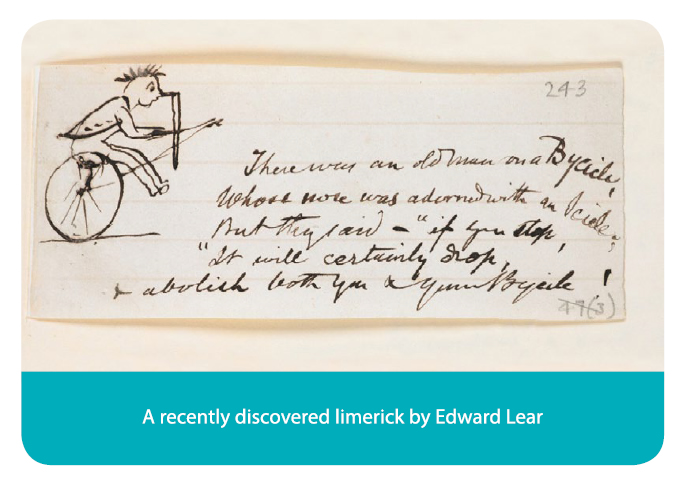 Born in the village of Holloway on 12 May, 1812, he was the twentieth child in a family of twenty-one children. His devoted older sister, Ann, brought him up in a separate home from his countless siblings. Suffering from epilepsy, chronic asthma and weak eyesight, his education was mostly at her hands. His father, a stockbroker of Danish background, had understandable money troubles. Fortunately, Lear’s natural ability as an artist and draughtsman enabled him to earn a living from the age of sixteen, and ultimately win the wholesale admiration of society. Between July and August 1846 he visited Queen Victoria at Osborne House in order to teach her ‘landscape painting in watercolours’. But he was also faced with the difficulties of being a homosexual in the morally censorious climate of mid-19th-century England. While he was to find living abroad easier, he was always a lonely man and this comes across in the sad, forlorn quality of his nonsense poems.
Born in the village of Holloway on 12 May, 1812, he was the twentieth child in a family of twenty-one children. His devoted older sister, Ann, brought him up in a separate home from his countless siblings. Suffering from epilepsy, chronic asthma and weak eyesight, his education was mostly at her hands. His father, a stockbroker of Danish background, had understandable money troubles. Fortunately, Lear’s natural ability as an artist and draughtsman enabled him to earn a living from the age of sixteen, and ultimately win the wholesale admiration of society. Between July and August 1846 he visited Queen Victoria at Osborne House in order to teach her ‘landscape painting in watercolours’. But he was also faced with the difficulties of being a homosexual in the morally censorious climate of mid-19th-century England. While he was to find living abroad easier, he was always a lonely man and this comes across in the sad, forlorn quality of his nonsense poems.

The recently formed Zoological Society of London employed the young Lear as an ‘ornithological draughtsman’. His first publication, Illustrations of the Family of Psittacidae, or Parrots, began to appear in parts when he was nineteen, publication continuing from 1830 to 1832. This exotic publication was based on the Zoological Society’s own collection of specimens, and it was through the Society that he first made the acquaintance of Lord Stanley, later 13th Earl of Derby. The aviary and menagerie at Knowsley Hall, Lord Stanley’s ancestral home near Liverpool, were the largest in the kingdom, eventually occupying 100 acres of land and 70 acres of water.

Lear accepted Lord Stanley’s invitation to reside at Knowsley, which he did on and off in the years 1832-1837. His role as artist in residence was to record the singular-looking birds and mammals in his patron’s zoo, and he became the first major artist to draw birds from life instead of skins. In his leisure time he entertained the children at Knowsley with poems, drawings, alphabets and menus.

He illustrated the limericks he found in Anecdotes and Adventures of Fifteen Gentlemen (circa 1822), and his mind soon teemed with his own. However, he never used the term limerick, preferring to call his lyrics ‘nonsenses’. His charming conversation and piano improvisations were no less pleasing to the adults.

Lear moved to Rome in 1837, joining a circle of expatriate English painters and writers, landscape drawing made less of a demand on his weak eyesight. A ten year sojourn in Italy led to two richly illustrated books, Views in Rome and Its Environs (1841) and the 2-volume Illustrated Excursions in Italy (1846-1847). The year 1846 also saw publication of two other titles. Both contained depictions of birds and animals, and were yet utterly different in character. Gleanings from the Menagerie at Knowsley Hall, a book paid for by his patron, was a folio illustrated with 17 hand-coloured lithographed plates after Lear, a serious work of natural history.

The Book of Nonsense by Down Derry Down was an all-lithographed work in two parts, each bound separately in two oblong octavo volumes, their content seventy-two limericks printed on one side of the leaf only, each with an illustration after the author. Both volumes had the same pictorial front board capturing the moment of uproarious delight when the poet-artist passes his Book of Nonsense to a group of children. The accompanying limerick reads:
There was an old Derry down Derry,
Who loved to see little folks merry:
So he made them a Book,
And with laughter they shook,
At the fun of that Derry down Derry!
Just visible beneath this opening limerick is the date 10 February 1846 and the imprint of Thomas McLean, 26 Haymarket. About 500 copies were published by McLean, and sold at 3/6d.


Lear persisted with the pseudonym of ‘Derry Down Derry’ for the second one-volume edition by McLean which appeared in 1856. This reprint is today rarer than the first edition itself. A third edition, commissioned from Routledge, Warne and Routledge by the author, was published in 1861-62, and became the basis for all future editions. This time, Lear supplied 43 new limericks accompanied by his illustrations; lithographs were replaced by wood-engravings made from his drawings by the Dalziel brothers, who did the printing. Three limericks in the original edition were deemed unsatisfactory and dropped. Lear, who was named as author for the first time, included this dedication expressing how his poems had already given pleasure to two generations: ‘To the Great-Grandchildren, Grand-Nephews, and Grand-Nieces of Edward, 13th Earl of Derby, this book of drawings and verses (the greater part of which were originally made and composed for their parents) is dedicated by the author, Edward Lear’. The dedication is dated 1862 at the foot.

Once the third edition of 2000 copies had sold out, copyright was bought by Routledge who reissued it on a regular basis. Within only two years, it had reached a ‘fourteenth edition’. The first American edition is probably that by Willis P. Hazard of Philadelphia in 1863, copying the Routledge printing of the same year.
After settling at San Remo, Italy, Lear published three more volumes of nonsense with his own illustrations. Nonsense Songs, Stories, Botany and Alphabets appeared in 1871. Its most famous poems include ‘The Owl and the Pussycat’, written for the three year old Janet Symonds, and ‘The Jumblies’. Both narrate journeys to remote places. But in their romance, the owl and the pussycat go to sea in a pea-green boat, while the Jumblies seal their fate by departing for ‘far’ places in a sieve.
More Nonsense, 1872, was devoted to fresh limericks. Laughable Lyrics. A Fourth Book of Nonsense Poems, last to come out in 1877, included favourites like ‘The Dong with a Luminous Nose’ and ‘The Courtship of the Yonghy-Bonghy-Bò’. Lear’s inventiveness seemed to have no limits. Nonsensical creatures abound in this last volume, as do nonsensical landscapes like ‘the Hills of the Chankly Bore’ and ‘the Great Gromboolian Plain’.
All too commonly the Book of Nonsense was read to destruction. This is especially true of the first edition, whose pages were glued but not sewn together. ‘The two volumes consisted of individual leaves glued to the back with rubber solution; the contents, prone to disintegration, often fell to pieces and were thrown away. Others were rescued, but rebound with leaves missing or replaced in a different order. This did not make for wide distribution, and when a second edition was published in 1855, it too was shoddily lithographed and bound’ (Grolier 32). A census taken by Justin Schiller in 1988 located only 11 complete and 12 incomplete copies of the first edition, though the number of survivals now appears a little higher than that.

In buying a modern edition of Lear’s nonsense verse, it is important to ensure that all his original illustrations are included, and not just a small selection of them. For it is actually the interplay between illustration and text which is the source of enjoyment. If you read the ‘nonsense’ first, it raises the question of how the illustration can make sense of it. If you begin with the illustration, you then want to know how its grotesqueness can possibly be explained in the snippets of verse below. Invariably the focus is on a single individual, separated by one peculiarity from the rest of society and essentially in conflict with it. In some cases eccentricity triumphs over dull conformity, in others it lamentably fails. But the game of seeing how verse and illustration match up together provides endless fun.
Lear had begun to systematically collect and illustrate limericks, some years before A Book of Nonsense appeared in 1846. Evidence for this comes from an amazing 2-volume manuscript notebook filled with drawings and limericks, included in the Edward Lear exhibition at the Royal Academy in 1985. The notebook had first been uncovered in 1981; to then be published by Penguin as Bosh and Nonsense in 1982, at which point it was given an 1860s date of composition. However, the date was revised to the early 1840s by the Royal Academy, and when the notebook was auctioned in 1986 Sotheby’s agreed. The contents were summarised as ‘79 humorous ink drawings and the accompanying autograph verses, each on a separate sheet, numbered 1-80, number 11 no longer present’. 16 of the limericks had never been included in print, while the variation among the drawings was even greater. ‘At least twenty’ were ‘alternative designs, with no similarity to the published drawings’. The notebook left its estimate of £40,000-60,000 behind to reach a figure of £143,000, a sum which would easily be tripled, perhaps even quadrupled, if it went under the hammer today.

Copies of A Book of Nonsense in first edition form which are badly worn and/or defective won’t normally command a big price. Three copies of the first edition came up for auction in 2016, following a period of 12 years in which there had been no recorded sales (see ABPC database). In March 2016, Bonham’s sold a first edition lacking 2 plates for only £800 hammer. In May, the price rose slightly for a much repaired copy lacking one plate. This made $2000 at Swann’s. Such incomplete copies may be destined for framing, if not too damaged. However, the third copy sold at Sotheby’s on 20 October 2016, was certainly not one to be broken up. This was complete, and despite being ‘affected by spotting and browning throughout’, bidding closed at £35,000 hammer, not a bad investment for 3/6d.
Henri IV and his wife Catherine de Medicis decided to rebuild and add to the collection of the Crown jewels. Nicolas Harlay de Sancy was in charge of Henri IV finances. He owned two diamonds which he purchased from the King of Portugal. He recut these and named them Grand Sancy and Beau Sancy. He offered to sell the Sancy to Henri IV who declined stating it was too expensive. Instead, he bought the Beau Sancy.
The diamonds most likely came from India and could have been part of the jewels belonging to Charles the Bold, Duke of Burgundy 1467-1477. Amongst his jewels were the White Rose diamond. It is rumoured the Sancy could
be the same stone.


The Beau Sancy, K colour, light brown, SI1 clarity, type IIa (type IIa diamonds are chemically “cleaner” and often have exceptional clarity) weighing 34.98 carats. In 1610, Marie de Medicis had the Beau Sancy set atop her coronation crown.
The following day, Henri IV was murdered by Ravaillac. For four centuries the diamond was owned by several European Royal houses, such as the House of Medici, Kings of England and Prussia. It was sold by Sotheby’s in 2012 for £5.3 million to a private collector.
The Sancy weighs 55.23 carats. It has 51 facets and was considered to be one of the most beautiful diamond for almost two centuries until the Cullinan was found in 1905 in South Africa.
It was purchased by James I for 60,000 French crowns and was set in the Mirror of Great Britain.

The Sancy was described in the Tower of London’s inventory as “…one fayre dyamonde, cut in fawcetts, bought of Sauncy…”
The Sancy was briefly owned by Charles I, King of England and then by his son James II. James had to flee to France under Louis XIV protection and brought with him the Sancy which he agreed to sell to Cardinal Mazarin in 1657 for £25,000.

Cardinal Mazarin was advisor to the young Louis XIV. Incredibly wealthy with a fortune said to be worth 22 tonnes of gold, he purchased gems and jewels which he will then bequeath to Louis XIV on his death with the condition that these could not be sold, had to remain all together and would be called the “Mazarins”.

Amongst those were 12 stones which he purchased from Henrietta Maria, Queen Consort of England, wife of Charles I in exile from England. These stones are the foundation of the 18 “Mazarins”.

Louis XIV added to his collection by purchasing the Diamant de Guise in 1665 and in 1673 the Hortensia diamond, a pink 21.32 carat diamond.
Most, if not all diamonds came from India, more accessible than Borneo where diamonds were also found. During one of his last trips, Jean-Baptiste Tavernier brought back the “Tavernier Blue” which became the “Grand bleu de Louis XIV”. It weighed approximately 115.40 carats.

It was stolen in the great theft of 1792 and recut, down to 69 carats. It is said to be the well-known cursed Hope diamond, recut to prevent proper identification.
Tavernier also brought back the Grand Sapphire of Louis XIV, of Ceylon origin. The king purchased it in 1669 and weighs 135.80 carats. It was believed that sapphires could cure plagues which is why it was never cut. I is exhibited in Paris.
In 1691 an inventory was drawn up stating that there were: 5,885 diamonds, 1,588 coloured gems, 488 pearls adding to a total of 11,430,481 pounds.
The Regent diamond was added to the collection a few years later, bought by the Duke of Orléans in 1717, then Regent of France, for £135,000 (the equivalent of £21 million). It had taken two years to cut, 1703-1705, and finally weighed 140.64 carats.

It was considered to be the most beautiful and clean diamond, until the Cullinan, becoming a symbol of the French crown.
In 1722, the Regent was set at the front of Louis XV coronation the crown, the Sancy at the top of the fleur-de-lys alongside Mazarin diamonds.
It was subsequently set in Louis XVI coronation crown in 1775. In 1791 is was valued at £480,000 (the equivalent of £58 million).
Having won the Campagnes d’Italie (wars in Italy), a superstitious Napoleon had the Regent set in his sword in 1812, convinced it had made him win the wars. It was later set in Princess Eugenie’s diadem in 1825.

